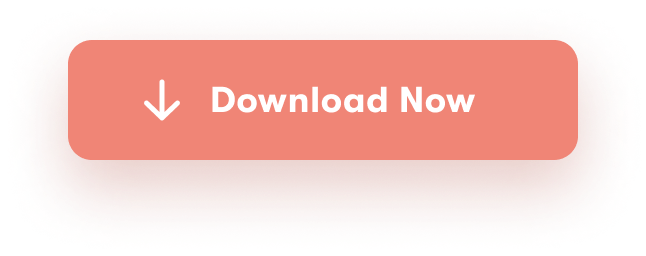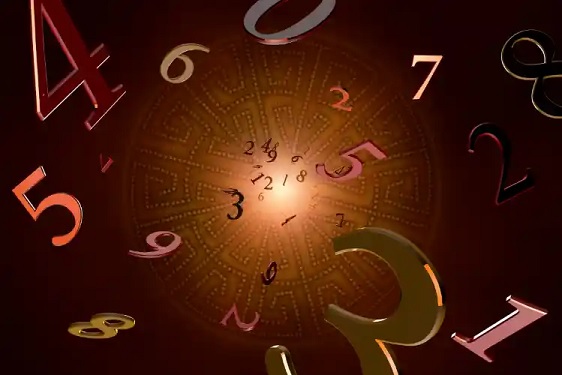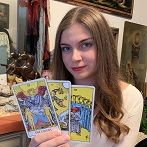 “The mind is not a vessel to be filled but a fire to be kindled.” ~Plutarch We live in an age of information overload. Our televisions and the Internet are flooding our senses with a myriad of things. Researchers carefully craft all the advertisements we watch and all the magazines we read to prime us to think certain thoughts and take certain actions. A particular color, a special tone in the voice, a slight gesture with the eyes—all are designed to do one thing, and one thing alone: influence our minds.
“The mind is not a vessel to be filled but a fire to be kindled.” ~Plutarch We live in an age of information overload. Our televisions and the Internet are flooding our senses with a myriad of things. Researchers carefully craft all the advertisements we watch and all the magazines we read to prime us to think certain thoughts and take certain actions. A particular color, a special tone in the voice, a slight gesture with the eyes—all are designed to do one thing, and one thing alone: influence our minds.
They affect us just enough that the subsequent thoughts we may have seem like our own, and the decisions we make based on those thoughts seem rational.
On a daily basis, we are ‘primed’ to spend our time or money on something we may not need. A thought is planted in us so carefully that suppressing it feels like denying our most basic instincts. And why not? It stirs our primal desires of power, sex, and influence. The results are obvious, and all around us.
We are always looking forward to the next gadget to purchase, the next movie to watch, or the next television series to binge on. We are consuming information and material possessions at a startling rate, and we don’t seem to mind. We feel that when it comes to entertainment and information, there is no such thing as too much.
We also engage in the use of social media as a means of connecting with people. We want to share everything from pictures of our family to the latest meals we cooked.
Sending out that daily status update makes us feel a certain kind of security about who we are. We know we are living a good life when someone confirms it with a “like” on the Internet. It’s a form of social validation that encourages sharing, often at the expense of true feeling.
This constant outward search for approval is often the reason why we don’t look for an internal source of approval. We get used to asking others about who we are, and become unable to see the reality for ourselves. If they tell us we are doing the right thing, then we must be; otherwise, we are not that sure.
The result of this trend is we have no time left to reflect or ponder. If, on occasion, we do look inward, we feel a sense of emptiness and fear. Not knowing what to do with it, we try to fill that emptiness with some external source of gratification.
That emptiness is important. It is telling us that we are disconnected from who we are. This disconnect is one of the main reasons why we end up in painful life situations.
A few years ago, I was about to graduate from a US university. The job market was tough, and I needed all the help I could get to find decent work. At the time, a professional contact who I greatly admired became my mentor. He seemed to know it all, and I always looked forward to his advice.
He believed that a person in my field would not find a job easily out of college, especially because I was an international student and would require a work permit.
He thought that in order to survive, I needed to get certified as a programmer in a particular high-end software. Although it would be tough to get, the effort would be well worth it. And if I still couldn’t find a job, he would get me in touch with the right people himself. And so, it was decided.
Over the next six months, I spent thousands of dollars on books, coaching, and commuting in order to get certified in a computer language that I struggled to develop any liking for. I was jobless for six months and couldn’t even afford to pay my rent. I lived with friends who were kind enough to let me sleep on their couch and study for twelve-plus hours every day.
The day after the exam, I had to go to the ER for severe dehydration. It turned out that I had lost close to twenty pounds over the previous few weeks and weighed only 125 pounds. Obviously, I could not afford health insurance at that time, and got hospital bills that took me two years to pay off in installments.
When my mentor found out how terribly I had performed in the exam, he told me my chances weren’t looking good and he wouldn’t be able to do anything for me. I never heard from him again. After a month, I got the result that I did manage to barely clear the passing mark, but it was too late. I had already accepted a job that would let me pay the bills.
Over the next few years my self-esteem continued to erode. It ended with me leaving the country and heading back to India after four years of struggle in the United States.
Looking back at why I placed my trust in someone so blindly, and continued to face self-esteem issues, I realized that I was totally disconnected from who I was as an individual.
I knew that I did not like computer languages to begin with, but while making that fateful decision, I ignored all the self-knowledge I had until that point. I put more trust in someone else’s belief about who I was, just because I needed their approval.
I suffered, not because someone gave me bad advice, but because I was unable to reject it. I kept ignoring my instincts because I thought they didn’t matter.
A good sign of having lost connection with yourself is that your true instincts feel like distractions, and distractions feel like true instincts.
When we are distracted, we feel bored, confused, and unmotivated. We become inclined to pick the easiest path from those available.
The post-Internet world is designed to distract us, disconnect us from ourselves, and keep us that way. It gives us one novelty after another, just like giving a child one toy after another to keep her occupied. Otherwise, she might cry. But sometimes, a child needs to cry.
We are afraid of crying, of getting hurt, of looking at ourselves as we are. So we prefer to be distracted and entertained, no matter what the cost.
Is there a way to rediscover that connection with ourselves? To feel centered, and confident about who we are; to understand our emotions, feelings, and desires clearly; to know our strengths and acknowledge our limitations?
Can we know ourselves from moment to moment, every day, not with words or descriptions, but with an actual perception of our inner selves being intact, self-sufficient, and free from outside influence?
I think there is a way. This three-step process has greatly helped me reconnect with myself. I hope it helps you too.
1. See what you see.
Take a moment to notice what you are seeing at the moment. Is it your phone or a computer on which you are reading this, and your surroundings? Or, are you also seeing, at some level, mental images? Most of the time, we are unconsciously seeing things, such as what happened at work today, or what our friend said to us, or some scenes from a favorite TV show. At other times, we are often seeing things that we want to happen, or fear might happen. The physical eye shows us one reality, which is often mundane, but the mind’s eye shows us a reality that can be quite interesting. We unconsciously or consciously visualize things that either give us pleasure or fear. We imagine negative outcomes and think of ways to protect ourselves in case they happen, or we imagine positive outcomes like enjoying an upcoming vacation. Yet, both outcomes exist only in the mind. The present reality contains no such thing. Visualization is a double-edged sword. As kids we are encouraged to imagine more and more, in order to be creative. But creativity isn’t just visualization, is it? It is also about seeing the same reality as others, but differently. The key is being able to visualize when we need to, and not, when we don’t. Otherwise our imagination becomes hyperactive and results in constant stream of images in front of our eyes. As if we were dreaming, while awake. If we can stop our visualization at will, and only see what our physical eyes are showing us, then our mind becomes simplified. It relaxes and naturally draws our attention inwards, to our bodies. Our attention moves from things that exist in the mind, to the things which exist in physical reality.
Quick exercise: Look around the place you are currently sitting in. See all the things in your room, no matter how insignificant. Look at every shape, every color, every corner. Take time to notice it. Look at your own hands and examine them closely. Reality is full of physical sensations, not imagination.
This brings us to the second step in the process.
2. Feel what you feel.
If someone were to ask me, “Can you describe exactly all the emotions you are having at the moment?” I would find it difficult to answer. We often experience multiple emotions at the same time. Sometimes we are angry, but also sad because of our life situation. Sometimes we are at peace with the world, but also feel a longing for something better. Sometimes we are full of gratitude, but not without a hint of pride. Our body responds to the emotions we are having, through physical sensations. When our palms sweat, we know we are nervous, and when our heart races, we know we are excited or afraid. When we are worried, our breathing becomes shallow and our muscles and nerves tense up. When we are happy, we breathe easy and our body relaxes. The reason is, our mind is telling the body what to feel, based on what the mind is thinking. We are so used to living this way that we pay no attention to what the body is feeling, without this input from the mind. As a habit, our body obeys our mind, not the other way around. For example, what are you feeling in the little toe of your left foot? Can you distinguish the sensation in each one of your toes? It’s not that easy, because our mind has never paid attention to it before.
Quick exercise: Close your eyes and try to discern the shape of your hand by feeling the electrical impulses on the skin, and the gentle blood flow in the veins. If you are able to discern only the index finger, or just the thumb, then become more sensitive to what you are feeling, until you can feel your entire hand. Within two to five minutes you will feel your heartbeat and its rhythm pulsating through your hands. It has always been there. Repeating this exercise with our entire body can help us develop a full body awareness. In my experience, this is a very powerful way of connecting with ourselves. The only thing you have to watch out for is what you think about those sensations. For instance, you find a source of pain, you might hear your own voice say, “Here is that bothersome pain again. What do I do with it?” If you hear negative self-talk such as this, it is okay. Listen to it calmly.
This self-talk points us to the next stage of connecting with ourselves, which is listening.
3. Hear what you hear.
Whose voice do we hear when we talk to ourselves? It’s our own voice, or at least how we want ourselves to sound, right? The person who speaks inside our mind is the “I,” and the person who listens, is “myself.” Boy, do they love to talk! The “I” is always telling “myself” things to do, and things to avoid. Even if we go on a solitary hike on a mountain to spend some time in nature, we can still hear the “I” talking. But, why are there two of us? Commonsense dictates that there should only be one, right? Of course there is only one individual, and we can all experience it this way.
Quick exercise: Close your eyes, and pay close attention to whatever sounds there may be around you. For thirty seconds, listen to every detail you can hear. Then open your eyes. While you were listening, was there an “I” talking to a “myself”? Or was there only the experience of listening? When you were having that experience, there was no division between “I” and “myself.” They were one! That state of pure listening, feeling, or hearing is the state of connection. When we are fully connected, we become whole. What happens when we find the connection? When we are connected it is possible to know our pleasures, desires, fears, ambitions, and anxieties for what they actually are. We perceive them with clarity and without any internal conflict.
For example, if fear arises, we notice a few things about it.
1. We realize that there is nothing dangerous actually taking place, except in our minds.
2. That our heart rate changes, and muscles tense up as the fearful thought arises.
3. That the “I” is talking to us and telling us to be afraid.
Knowing these things, we are already one step ahead of fear. The next time it arises, we can predict its pattern. Without worrying or overthinking, now we can solve the real problem at hand, if one exists at all!
When we are connected, our instincts also become stronger, and we understand what is right and wrong for us. We can make big decisions easily, and have no regrets later.
Four years ago, I had a persistent feeling that I should adopt a dog. Despite having no experience raising a puppy, my instincts kept telling me I needed to do it. My parents and a few of my friends advised against it. They said, “You don’t know what you’re doing. You will end up returning the poor animal the very next day.” This time, I listened to myself. I went through the learning curve that comes with taking care of a furry friend, but never regretted my decision. Today, our life is unthinkable without our dog, and I am a much better person because of him.
A strong connection is sometimes all we need, and in some cases, all we have, to keep us sane in this evolving world.
![]() Amit Pagedar is based in the United States and writes a blog focused on self-improvement and meditation. He believes that there is only real way to bring about self-transformation, and that is through the consistent cultivation of self-awareness. This post was republished with permission from tinybuddha.com. You can find the original post here
Amit Pagedar is based in the United States and writes a blog focused on self-improvement and meditation. He believes that there is only real way to bring about self-transformation, and that is through the consistent cultivation of self-awareness. This post was republished with permission from tinybuddha.com. You can find the original post here





